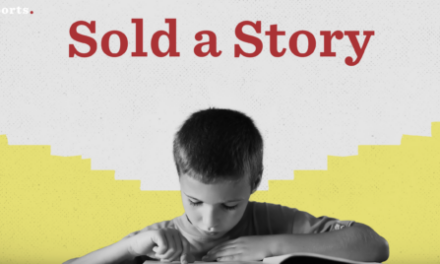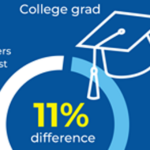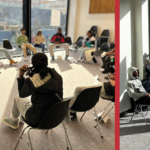Remote reporting is no substitute for the real thing — especially when it comes to important national education stories.
By Alexander Russo
By and large, students and teachers have returned to campus so far in the 2021-22 school year. But too many education reporters haven’t followed them there.The result is a stream of second-hand coverage that gives the public little real sense of what’s going on.
The problem is particularly acute when it comes to remote-reported coverage of national stories such as schools’ responses to the Omicron variant. Are kids really getting infected at school and ending up in the hospital — or infecting others? Are mitigation strategies operational (and tolerable for parents and teachers)? Are staffing shortages widespread or tightly clustered? National outlets haven’t managed to clarify the situation nearly as well as might be expected.
I’m increasingly convinced that lack of in-person reporting is a key part of the problem — and I’m not the only one to compare the benefits of in-person reporting to in-person education.
“Just like in-person learning is superior, so too is in-person reporting,” says Jacqueline Rabe Thomas, an investigative reporter at Connecticut Public Radio, who has gotten into schools to observe a teacher struggling with staffing shortages and a social worker’s efforts to get kids to come back to school.
Of course, it’s possible to produce strong journalism without going anywhere. But that’s not often the case. Reporting produced without firsthand accounts from schools often relies on dramatic anecdotes and bold sound bites. It tends to focus on conflicts and exceptions and setbacks, and to put political debates at the center. Context and nuance are often lacking.
However, the current crisis in education demands a more grounded, nuanced sense of what’s going on. And to get that, we need news outlets, journalists, and school systems to buy into the importance of old-fashioned in-person reporting.
By and large, students and teachers have returned to campus so far in the 2021-22 school year. But too many education reporters haven’t followed them there.
Like remote learning, remote reporting was initially a substitute for traditional reporting during the pandemic. By and large it relies on second-hand accounts, anecdotes, social media sources, and quotes from experts – useful information gathered online, or by video, phone, or text.
Over the past 22 months, many reporters have gotten ingenious at reporting without being in a school or classroom — so effectively that sometimes it might not be apparent that they weren’t actually in any schools.
But the need for more in-person education journalism has been apparent since the start of the pandemic, when remote learning was new and unfamiliar. What was the experience like for most kids and teachers? It took an inordinately long time for the inadequacies to become clear.
The need has only intensified over the past few months, during which there’s been a national debate over learning loss, student misbehavior, and COVID mitigation strategies — much of it fueled by remote reporting. And the limitations of remote reporting have become acute in recent weeks, during which in-person learning has been threatened by staffing shortages, quarantine protocols, and teacher and parent pressures.
“It is easier to describe what is happening inside schools if you’re, you know, inside the schools,” quipped the Courier Journal’s Olivia Krauth, who recently got into a school for a story about substitute teacher shortages that included time spent with a retired teacher who came back into the classroom as a long-term sub to help meet the need for more teachers. “That can mean seeing things for yourself for accountability purposes or catching scenes that illustrate things.”
The need for more in-person education journalism has been apparent since the start of the pandemic, intensified over the past few months, and become acute in recent weeks.
Even in the best hands, remote reporting is no replacement for the real thing, which grounds reporters’ understanding of what’s really going on in schools.
And reporters know this. In September, I interviewed several about the importance of in-person reporting. Asked about it this week, they’re even more emphatic:
“Every time I go into a school to report, I am reminded that there is a lot of joy in classrooms, that most teachers and school leaders are earnest in their desire to do right by children and most children come open and ready to learn,” writes WBEZ Chicago Public Radio’s Sarah Karp. “But I am also reminded that…many children in Chicago are receiving an inadequate education.”
She also gets to observe and share vivid moments, like elementary students singing enthusiastically in music class. “The kids were singing out of tune all over the place… but they were confident and happy. You could see how much they loved it and how much it made them love school.” She adds: “I never regret going into a classroom.”
“The problem with reporting remotely — even after we have all become more adept at Zooming into classes and homes to capture what’s happening live and in-the-moment — is that you miss stuff,” says Erin Richards, USA Today’s national K-12 education reporter, who laments that she has not yet been in a school this year.
“I like to think I’ve gotten much better at interviewing students over the phone,” says Chalkbeat national education reporter Kalyn Belsha, who recently got into two schools for a story. “But for teaching- and learning-focused stories especially, it’s hard to recreate those moments when you can see a student was engaged or confused without seeing it yourself.”
“I appreciate the old-fashioned way of [reporting] because it’s more personal and I think you get more honest answers this way,” Josh Byers told me via email. Quoting an old college professor, he added, “If you give someone enough time to think and rethink a question you end up with a very curated, safe response.”
“In-person reporting is everything,” says Colorado Public Radio’s Jenny Brundin. Revealing moments are observed. Interactions among kids and adults are captured. “Interviewees are more intimate, bold, vulnerable, more able to reveal emotion.” In-person reporting is “the meat and potatoes of education reporting,” according to Brundin.
Or at least, it should be.
Even in the best hands, remote reporting is no replacement for the real thing, which grounds reporters’ understanding of what’s really going on in schools. And reporters know this.
There’s nothing magic about in-person reporting, just like there’s nothing magic about in-person learning. Plunking a journalist in a school isn’t a guarantee of high-quality coverage. And there are many attributes of high-quality education coverage that aren’t directly attached to reporting methods, such as providing context and balancing setbacks against progress, or featuring parents and students as much as educators.
But the differences between remote-reported stories and those that feature in-person reporting can be stark. For a reminder, check out a recent New York Times story about the struggles students experience after being out of school so long, or this recent LA Times story about first-generation college students who’ve made it through the pandemic.
Generally speaking, I’d argue in-person reporting is much more likely to produce more nuanced, authentic, and useful coverage for readers — and less likely to produce a simplistic story. It’s a reality check for reporters and readers against preconceived notions and superficial narratives. And it distinguishes what reporters do from what anyone else with time and a computer can do.
The results tend to be much, much better.
There’s nothing magic about in-person reporting, just like there’s nothing magic about in-person learning. But the results tend to be much, much better.
How to restore in-person reporting as standard practice again, after nearly two years of remote coverage that’s now become a habit for some news outlets and journalists? It’s not going to be easy, but it’s possible.
EFFORT: Reporters tell me that getting back into schools takes additional lead time and preparation compared with pre-pandemic days, and that given limits on time and access, reporters need to know more about what they’re looking for and be explicit about their requests. The days of reporters making time-sensitive requests and wandering in and out of classrooms over a long period of time are over (and were even before the pandemic).
ACCOUNTABILITY: Editors and reporters should commit to getting into schools as much as is possible and appropriate — and note in their stories if they are being denied access by a school or district. Internal and external pressures and the need to do in-person reporting are an expected part of education journalism.
FEEDBACK: Though it can be hard to tell sometimes whether details come from firsthand observation or secondhand interviews, parents, educators, and advocates should call it out when they see they’re being delivered stories that lack firsthand accounts that would improve a story — and praise coverage that features valuable in-school observations.
The time to start is now.
Previously from The Grade
While American schools have roared back to life, media coverage has focused on setbacks (September 2021)
This year’s back to school coverage has been unnecessarily alarmist — again. (August 2021)
Back to school for reporters, too (September 2021)
Education reporters back in schools — and newsrooms (June 2021)
Top reporters share pandemic reporting tips (August 2020)
ABOUT THE AUTHOR

Alexander Russo
Alexander Russo is founder and editor of The Grade, an award-winning effort to help improve media coverage of education issues. He’s also a Spencer Education Journalism Fellowship winner and a book author. You can reach him at @alexanderrusso.
Visit their website at: https://the-grade.org/













